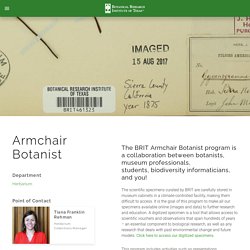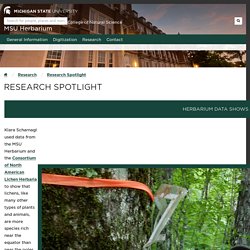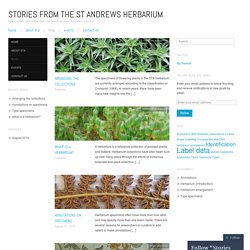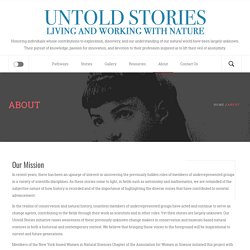Zoom
Trash

Armchair Botanist. The BRIT Armchair Botanist program is a collaboration between botanists, museum professionals, students, biodiversity informaticians, and you!

The scientific specimens curated by BRIT are carefully stored in museum cabinets in a climate-controlled facility, making them difficult to access. It is the goal of this program to make all our specimens available online (images and data) to further research and education. A digitized specimen is a tool that allows access to scientific vouchers and observations that span hundreds of years – an essential component to biological research, as well as any research that deals with past environmental change and future models. Click here to access our digitized specimens. This program includes activities such as presentations, transcription blitzes, and online citizen science activities, to help liberate the scientific specimens that are held in public trust, by the Botanical Research Institute of Texas. Scheduled Activities: Ongoing Activities:
Manchester. RBGE. Oak Spring Garden Foundation - The plants that help us say good-bye. The Hand Lens - The William & Lynda Steere Herbarium. Oxford University Plants 400. Horsetail Equisetum is an ancient genus of plants whose close relatives are fossilized in sediments up to 350 million years old.

Today, this once diverse group of plants is restricted to fewer than twenty species. Special characteristics of horsetail shoots made their ancestors evolutionarily and ecologically successful. Today, these resilient shoot systems often give gardeners severe headaches as they try to eradicate horsetails from their gardens. Horsetails produce massive systems of underground, branching shoots called rhizomes - the parts of the plant that you see above ground are only the tips of those branches - and it is virtually impossible to remove every piece of rhizome from infected soil. While horsetail aerial shoots are generally less than one metre tall today - exceptionally they may be as much as three metres in height - they are dwarfs compared to some of their ancient relatives. Kenrick P, Davis PG 2004. Liam Dolan. Brigitte Nerlich (@BNerlich) Research Spotlight - MSU Herbarium. Garrett Crow, a former graduate and local retiree now based at the MSU Herbarium, wrote the treatment for the parasitic aquatic Lentibulariaceae (bladderwort family).

Alan Prather, Director of the MSU Herbarium, contributed to the upcoming Lamiaceae (mint family) volume by writing treatments for four genera: Hedeoma (false-pennyroyal), Monarda (beebalm or horsemint), Poliomintha (rosemary-mint or mintbush), and Rhododon (sandmint). Josh Springer, former graduate student in the Jarosz lab, wrote treatments for Dryas (mountain avens) and Chamaerhodos (little rose). Outil de recherche autours des plantes. The interconnectedness of plant studies « Botany One. Kew Science Blog. Stories from the St Andrews Herbarium. The specimens of flowering plants in the STA herbarium are currently arranged according to the classification of Cronquist (1968).

In recent years, there have been many new insights into the […] Read Article → A herbarium is a reference collection of pressed plants and flowers. Herbarium collections have often been built up over many years through the efforts of numerous botanists and plant collectors. […] Read Article → Herbarium specimens often have more than one label, and may specify more than one taxon name.
Read Article → Cornell Mushroom Blog. Parks and Gardens UK. The Vasculum. The North Country Journal of Natural History. BSBI News & Views. Botanical Accuracy. Collected on this day - Mason Heberling. History and Philosophy of Science. Book submission: Gray’s School And Field Book of Botany. Book Traces: In the Leaves. Botany Book Trace of the Week. Untold Stories of Natural History Blog.
Our Mission In recent years, there has been an upsurge of interest in uncovering the previously hidden roles of members of underrepresented groups in a variety of scientific disciplines.

As these stories come to light, in fields such as astronomy and mathematics, we are reminded of the subjective nature of how history is recorded and of the importance of highlighting the diverse voices that have contributed to societal advancement. In the realms of conservation and natural history, countless members of underrepresented groups have acted and continue to serve as change agents, contributing to the fields through their work as scientists and in other roles.
Yet their stories are largely unknown. Our Untold Stories initiative raises awareness of these previously unknown change makers in conservation and museum-based natural sciences in both a historical and contemporary context. The Team.